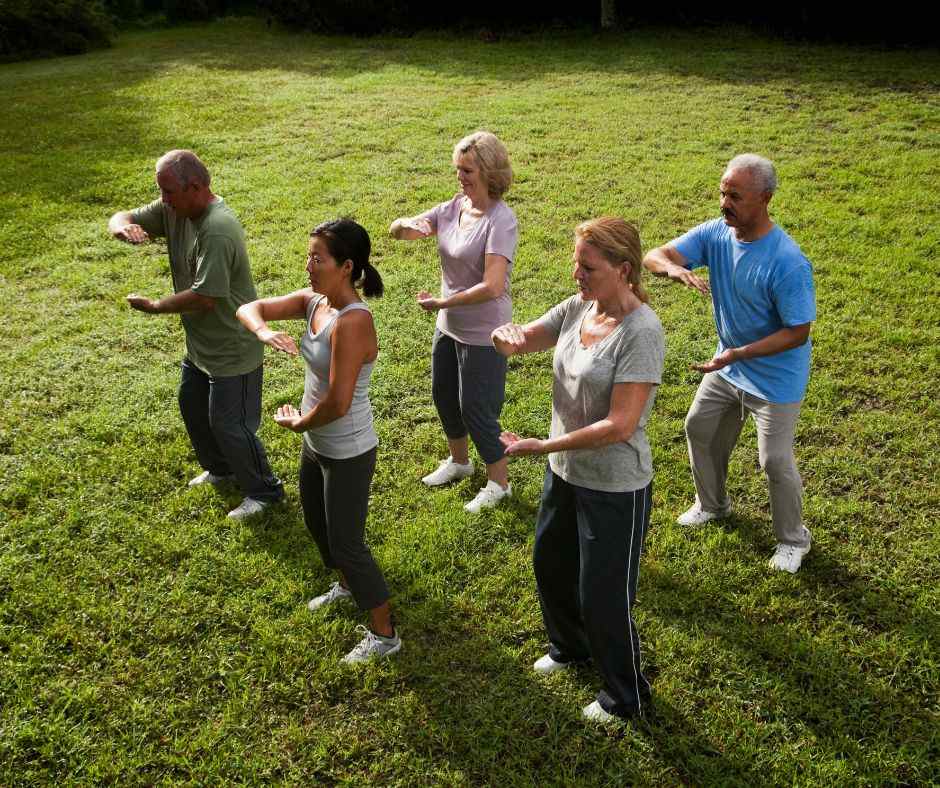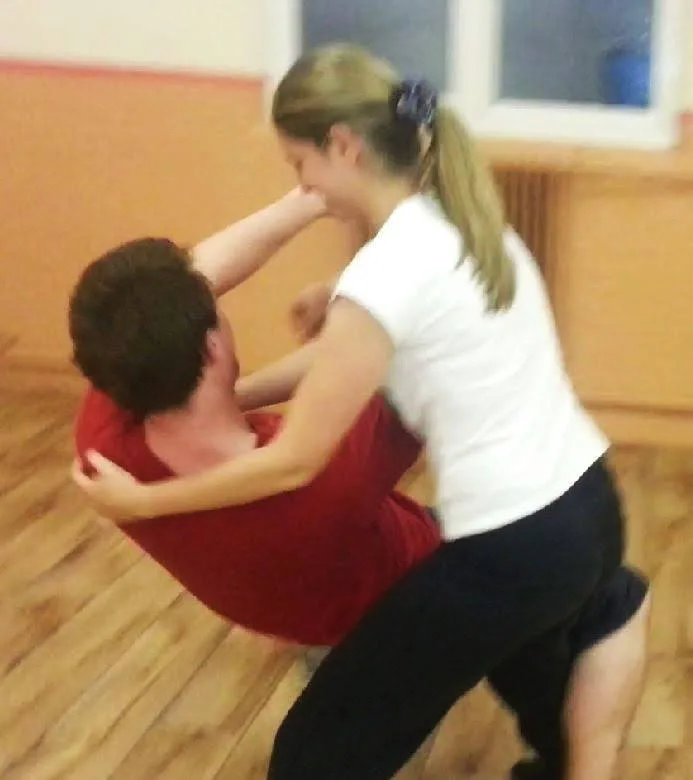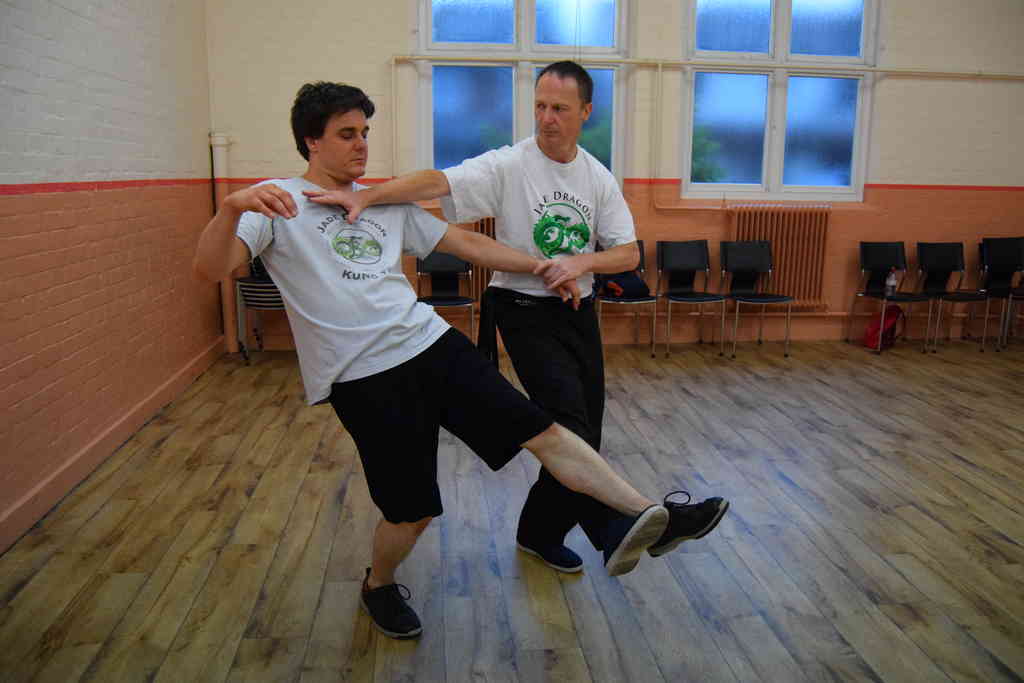Tai Chi is a Chinese martial art that has often been adapted to improve the health and balance of its many practitioners.
Tai chi is best known around the world for its forms. These slow, beautiful, graceful, flowing movements are associated with calmness of mind and physical control. They are a form of moving meditation with all the health and wellbeing benefits that implies.

Although tai chi is mostly associated with its forms those forms are not the whole of tai chi. They are just a representation of this deep and powerful martial art form. Much of the original combat functions of the tai chi forms has been lost and that is where much of their value in health and self defence lies.
Teachers often become too possessive of their forms and forbid any deviation however slight from the way they were taught. When that happens your art is dead, it can never progress any further.
Where forms come from
To many martial arts teachers their forms (or kata for Japanese arts) are treated as if they were the gospels of the bible. They act as if every word, every movement was handed down by some superior being who they could never equal. This superior being is long dead so is almost deified. Yet the person who developed the form was a human being like you or me and he developed the form over a period of time so that it became symbolic of his personal fighting art. The key words in that previous sentence you need to understand were ‘a period of time’, ‘symbolic’ and personal fighting art’.
All martial arts forms evolved over time by people who played with them, experimented with what worked and what didn’t. They tried various ways of holding the body to generate the maximum power with the minimum effort. They worked out the opponent’s most likely responses to their attacks and anticipated them in the following movements. They also anticipated being attacked from different directions and were prepared to change the footwork and arm movements to take that into account. The forms were fluid and not fixed.

The forms were fluid and not fixed.
When I said ‘symbolic’ I meant that the forms did not necessarily show overt techniques but hinted at them. An arm waved in a certain way in front of you could be a strike, a grab, a block, a throw or a thousand variations and combinations of these skills and more.
The Master would constantly experiment with these movements to get more and more combat applications out of them. Yet the movement would stay much the same in the form so that these applications would be hidden and known only to him and those students who were senior enough to learn them.
Personal fighting art
The words ‘personal fighting art’ are also important. Where did styles come from? They came about through Masters who experimented with what they had been taught, found ways to improve them and developed their own methodologies. They experimented to find fighting skills that were ideally adapted to them as an individual. Their size, their speed, their way of moving, their preferences regarding certain skills.
When you attend a class you all learn the same skills the same way. But that might not be appropriate for you. You may be too tall for certain skills to work, you may not be able to kick high, your hands may be too small to apply wrist locks effectively and so on. There are thousands of variations between different people and this includes the mindset – some arts are more aggressive others require calm or a single minded focus and so on.
The Masters of old developed their own personal fighting styles which were ideally adapted for them. It was like buying a bespoke suit rather than off-the-peg. This made them formidable fighters and legends were woven about them. Then they became teachers and taught their personal style to others so it eventually became a recognised style.
But the students who learned it were learning skills designed for someone else. If they weren’t taught how to adapt those skills to their own physiology and psychology then they could never get the best out of them. When I’m teaching 8 animal kung fu I am always careful to show students how to adapt their skills so that they can get them to work effectively.

Developed for a purpose
Tai chi forms, like anything else didn’t magically appear. They weren’t gifted to a worthy mortal by angels in the sky. They were developed by men for a specific purpose. The obvious and basic purpose was survival in combat. Yet like everything else in China the skills can be viewed on several levels.
What makes the study of any Chinese art so fascinating are the nuances. Nothing is ever straightforward. There are always meanings within meanings and things can be viewed on several levels.
The tai chi forms are a case in point. They not only confer excellent fighting skills but also give the practitioner relaxed power, radiant health and longevity. It is this multitude of benefits that stops so many people from deviating from their forms. They believe that if they do so then they will lose those benefits and will perhaps be disloyal to the men who developed them.
Well if you believe that then I have bad news for you. Your forms have already been changed and much of their function has already been lost. Many times over in fact. Since your forms were developed many bad things happened in China and most of them were during the twentieth century.
I go in to this in more detail in my book ‘The Effortless Power of Kung Fu’ but basically the twentieth century in China was a time when many of the arts all but died out. There was a civil war, the Japanese occupation, the second world war, civil war again, famine, the Communist revolution and the Cultural revolution.
For a period of around seventy years it was all but impossible to dedicate time to the training of martial arts. We lost around two generations of students and much of the most advanced knowledge was lost. What we are left with, not just in tai chi but in all the Chinese martial arts is a shadow of what it once was.
Many of the forms were simplified. This was partly out of necessity to make them easier to teach. Many of the students of the old Masters were now teachers themselves but had only partly learned the knowledge that their own Masters had developed.

They were also simplified to hide some of the more overt fighting techniques that they contained. But they were often hidden so well that many of these skills have now been lost by most tai chi teachers who don’t know how to use their own form skills in combat.
The power of being vague
The movements of tai chi can look quite vague to an onlooker. Yet in that vagueness lies part of their power.
There are few overt punches or kicks etc. Yet each movement can be changed and adapted to become a punch or other strike, a kick or throw, a joint lock or a weapons technique. An experienced Master can look at these vague movements and discern the fighting techniques hidden within them.
The more you play with these form movements the more you discover. In this way the form becomes your teacher. At least half of the techniques I teach my students are ones that I haven’t been specifically taught myself. They emerge from the forms. You do the movements of the form and experiment to see how they work. You discover new techniques and variations of old techniques within them. Then, when you try them out you have an almost 100% certainty that they will work as long as you keep to the principles.
Most of my kung fu students have previous experience in other martial arts. I’m often told that in their other schools they were shown form movements with no explanation of how they work. How pointless is that? To help them understand those movements I ask them to show me a move that they don’t understand and then I can usually show them, with a little adaptation, the effective fighting techniques that come from it.

If you want to translate something from one language to another you need somebody who speaks both languages.
If you want to regain some of the lost techniques in your forms you need to show them to someone who has experience in seeing the combat potential in those movements. That’s what I and other experienced martial artists with real combat experience can do. All too often the secrets are there just waiting to be revealed and set free.
Experiment and test
The other way is through experimentation. Take any movement and consider its potential. Imagine an assailant striking, grabbing, throwing, kicking etc and visualise how that movement could help you. So much of what I have learned over the last 40 years has come through experimenting then testing those experiments with a range of different students.
Through experimenting you can find movements that work then keep experimenting to get more and more power in them with less and less effort.
This is how the Masters of old developed their skills and helped them devise the forms that you are studying. Experiment and test. Experiment and test and never stop doing it.
Find out more about traditional Chinese practices to develop a relaxed and powerful body and a focused mind through the tai chi and kung fu classes I run or sign up to our site to learn the wealth of material we have here.